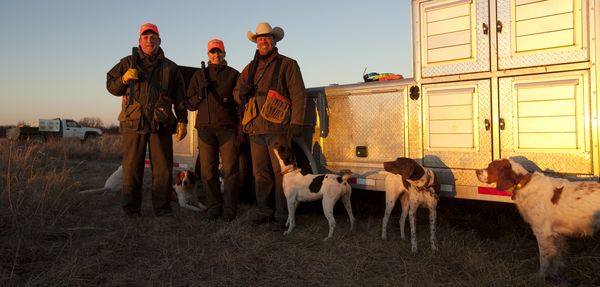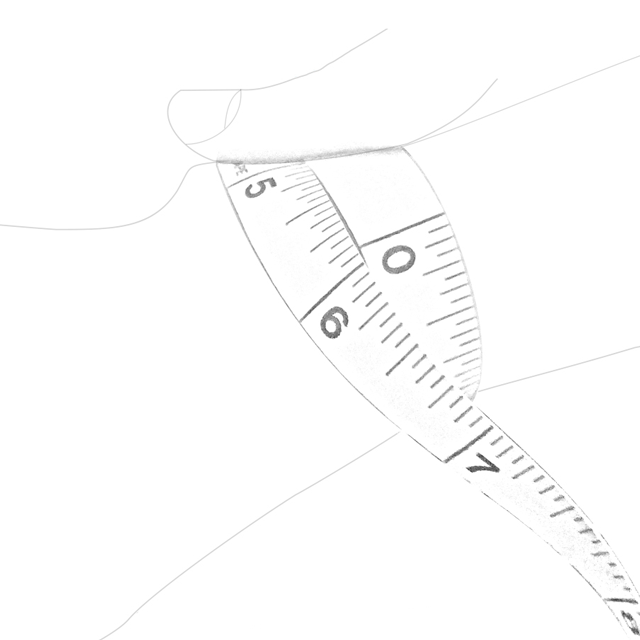Trainin’ Dogs with Rick Smith: Learning to Speak the Language
Wouldn’t it be great if our dogs could talk to us while we’re training them? To know what they’re thinking, and to have some sort of advance warning before they make a mistake would be wonderful. If they could only say, “Hey, I’m not sure what you want me to do. Can you explain it to me?” or, “I want that bird so badly I’m going for it, even though I know I shouldn’t.” It sure would make training easier!
Believe us when we say it does make training easier. Our dogs are communicating with us all the time; they communicate by their body language. When they “talk” to each other, they do it by using movements and postures and facial expressions. And on occasion, there will be a vocal addition via a whine or growl or bark, but the subtleties of body language are the mainstay of their communication. We’re going to throw a $10 word at you that we’ve used before (although we think it used to be a $5 word, but inflation being what it is…): anthropomorphism. It means attributing human thoughts and speech to animals. We use anthropomorphism a lot in our teaching and training, mostly as a way to translate what’s being “said” by the dog into something that people can understand and relate to.
There are a few pretty obvious signs a dog uses to convey its thoughts. The Big Three (ears, tail, and eyes) give us a non-stop flow of information. The tail is the most obvious. It tells us when a dog is happy (a fast wag, using everything from the tip of the tail to the whole back end of the dog); frightened or intimidated (tail tucked between its legs); intense and focused (tail held rigidly out from the dog’s body); tired (tail hanging down and minimal wagging); and tentative and uncertain (tail up partway and wagging slowly).
The ears often combine with the tail position to give us additional information. Ears perked forward and held as upright as possible (interest and intensity); ears folded back (confusion or uncertainty); ears hanging loosely and relaxed (everything’s fine); and ears pulled tightly back and eyes squinted and partially closed (intimidated and/or frightened).
The eyes tell a story as well, and combine with the ears and tail. Wide open eyes, focused on a particular spot, signify intensity and interest, while eyes looking away from us and half closed can mean the dog is either trying to ignore something or is thinking. In order to figure out which it is, we’ve got to look at the rest of the body language. Eyes half-closed and tail tucked between the legs are most often signs that the dog is intimidated, or maybe overloaded with too much information. The same half-closed eyes combined with a tail that is partially up or just hanging relaxed can mean the dog is thinking and processing information. These signs are pretty obvious to most people. And the one sign that everybody recognized is a dog trying to intimidate or planning to fight: body held rigidly, tail up and held stiff, ears forward, intense eye contact…combined with a ridge of hair standing up along the back and shoulders.
Those are the big “words” in the dog’s language. To really understand a dog, we need to look past those to the less obvious signs. In a training situation, how we react has to be dictated by what a dog is saying. We need to know if they are understanding the lesson being taught or if they’re confused; and we need to anticipate a dog’s reaction in order to either encourage it if it’s the correct response, or make a correction if the wrong response is likely. The ears, tail, and eyes will give us part of this information, but we need to learn a few more words of “dog speak” to really get the whole pictures.
One sign we need to watch closely for is acceptance. This can come in many forms and will vary depending on the amount of pressure a dog is feeling. A dog that accepts and submits to a cue from us will often lick its lips. This is a sign that the dog relaxed its jaws and mouth, since just like humans, dogs tend to clench their mouth when in a tense or unsettling situation. Another sign that the dog is relaxing and submitting is a swallow – it also shows that the dog had stopped clenching its mouth. This is often followed by a lick of the lips, but not always. Also, it’s important to watch the dog’s breathing pattern. When going for an uncertain or nervous state to a calmer frame of mind, the dog will slow its breathing, and sometimes give a sigh. When training or working with a dog, understanding these signs can tell you whether or not the dog is accepting the situation.
The whole body tells a story, too. Everyone is familiar with the classic puppy invitation to play, which is called a “play bow”: back end in the air, tail wagging, while the front is lowered to the ground and the pup has an excited expression on its face. And the dog that got into the trash while we were out of the house will often tattle on itself by a slinking a submissive body posture, with the head down, tail tucked, and the body slightly crouched.
Movement of the body is especially critical in reading a pointing dog. The body language most easily recognized is birdiness in the field. When the dog initially scents a bird, its body signals that excitement by increasing the tempo of the tail-wagging, the head comes up, and the dog moves more rapidly as it works out the scent. The end result upon locating the source of that scent is a dog freezing its movement and going on point.
Once that happens, we need to read the body language and see if the dog is committed to holding that point or is planning to break and chase the bird. We need to know what dogs are planning to do before they do it. Obviously, the feet can tell us if the dog is moving, but we need to know the dog’s thoughts prior to the feet moving. How is this accomplished? By watching the shoulders and head. A dog that is standing still but thinking about moving will lower its shoulders slightly and may also lower its head. If we can predict the movement, we can be ready to make an appropriate correction if needed. A tail that goes from rigid to slight wagging (also called “ticking”) may mean the dog is thinking about moving or is uncertain, but we need to know why. Is the bird moving? Has the scent pattern changed due to wind? Or is the dog going to bust the bird? Watch the shoulders and head: If they lower, the dog is about to move. A dog that holds point with its body and head but ticks the tail often means the scent has changed or the bird has moved. A ticking tail can also signify that the dog is feeling pressured, and the facial expression will tell you the difference.
Ever notice that your dog shakes its head and shoulders (like shaking off water) when you’re training it? Even though there’s nothing for the dog to shake off? This is the canine version of brushing off what you’ve just done… sort of “flipping you the paw.” If you have your dog on lead and it does this, try to catch it and stop it at the beginning by giving a quick, sharp tug on the lead.
Now that you know a little more about the way your dog is “talking” to you, also realize that we “talk” in the same manner, usually without realizing it. Dogs are experts at reading our body language and responding to it. They watch our eyes, body, hands, feet, etc. because it’s the language they’re born knowing. How many times has your dog reacted to a cue a split second before you actually gave it? That says you’re doing something via body language before actually giving the cue, and your dog has picked up on that signal. They read the obvious stuff – like picking up the keys to the car means you’re going somewhere – but they also read the less obvious, like knowing if we’re happy or sad or upset. Our body language tells on us, and the dogs read that when we’re training them, too. It’s a non-stop conversation we don’t even realize we’re having.
There are a myriad of combinations of body language and signals our dogs use, and we’ve just touched the tip of the iceberg here. If you watch closely, you’ll start to see the subtle ways your dog communicates, and you’ll be a much better trainer and partner because of it.
Originally appeared in The Pointing Dog Journal. Written by Sharon Potter
The post Trainin’ Dogs with Rick Smith: Learning to Speak the Language appeared first on Garmin Blog.
Sample Block Quote
Praesent vestibulum congue tellus at fringilla. Curabitur vitae semper sem, eu convallis est. Cras felis nunc commodo loremous convallis vitae interdum non nisl. Maecenas ac est sit amet augue pharetra convallis nec danos.
Sample Paragraph Text
Praesent vestibulum congue tellus at fringilla. Curabitur vitae semper sem, eu convallis est. Cras felis nunc commodo eu convallis vitae interdum non nisl. Maecenas ac est sit amet augue pharetra convallis nec danos dui.
Cras suscipit quam et turpis eleifend vitae malesuada magna congue. Damus id ullamcorper neque. Sed vitae mi a mi pretium aliquet ac sed elitos. Pellentesque nulla eros accumsan quis justo at tincidunt lobortis denimes loremous. Suspendisse vestibulum lectus in lectus volutpat, ut dapibus purus pulvinar. Vestibulum sit amet auctor ipsum.


